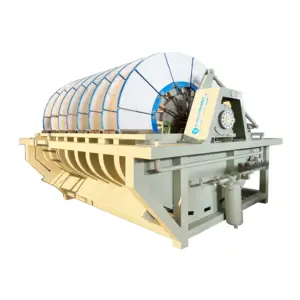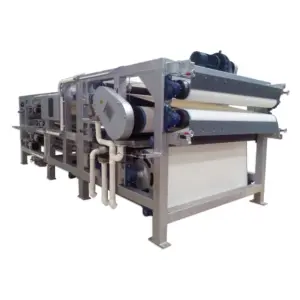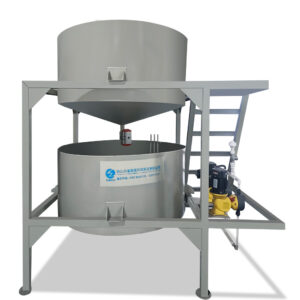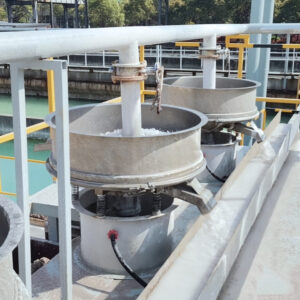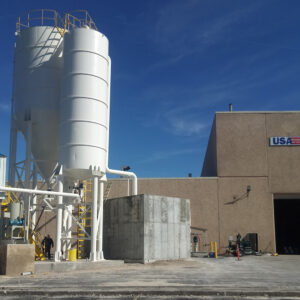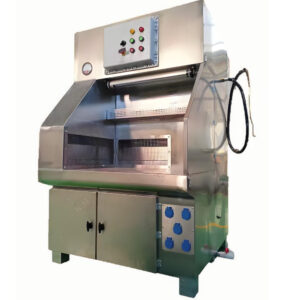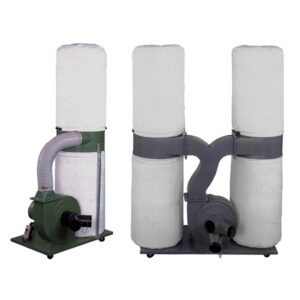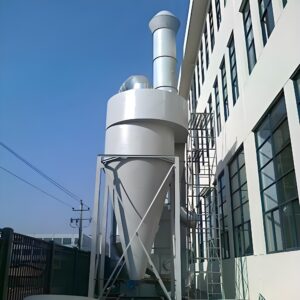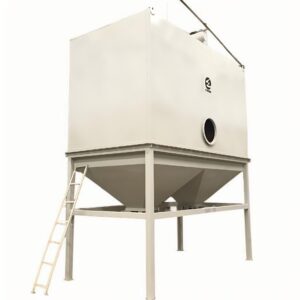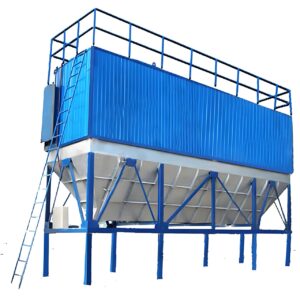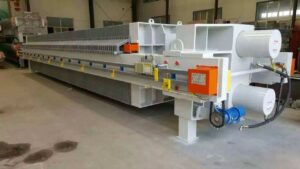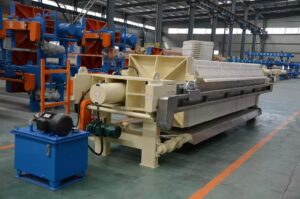Understanding Dust Collection Technologies
Manufacturing facilities across countless industries share a common challenge: controlling airborne dust and particulates. Last year, I walked through a woodworking shop that had recently upgraded its dust collection system, and the difference was remarkable. The air was visibly clearer, workers weren’t wearing as much protective equipment, and the facility manager couldn’t stop talking about their reduced maintenance costs. That visit sparked my interest in the nuances between different dust collection technologies.
When facilities need to capture airborne particles, two systems dominate the industrial landscape: cyclone dust collectors and baghouse filtration systems. These technologies represent different approaches to the same problem, each with distinct advantages that make the cyclone vs baghouse dust collectors debate more complex than it initially appears.
Dust collection isn’t just about keeping a facility clean – it’s a critical component of workplace safety, environmental compliance, and operational efficiency. Inadequate dust management can lead to respiratory issues among workers, create explosion hazards with combustible dusts, and result in costly regulatory violations. Beyond these concerns, uncaptured particulates can interfere with production processes, contaminate products, and increase equipment wear.
The fundamental distinction between these systems lies in their separation mechanisms. Cyclones use centrifugal force to separate particles without filtration media, while baghouses capture dust through fabric filters. This difference drives their respective performance characteristics across various applications and dust types.
PORVOO and other leading manufacturers have continued refining these technologies, balancing efficiency, cost, and application-specific requirements. Modern systems often incorporate advanced features like automated cleaning cycles, real-time monitoring, and energy-efficient components that weren’t available even a decade ago.
Before diving deeper into specific system attributes, it’s worth noting that the right solution often depends on your unique facility requirements, including dust characteristics, volume, temperature constraints, and space limitations. Sometimes the answer isn’t choosing between systems but determining how they might work together in your dust management strategy.
How Cyclone Dust Collectors Work
Cyclone dust collectors operate on a remarkably elegant principle that harnesses the physics of centrifugal separation. Dust-laden air enters the collector through a tangential inlet that creates a spinning vortex inside a conical chamber. This spinning motion generates centrifugal force that pushes heavier particles outward against the cyclone walls while cleaner air moves toward the center.
The particles slide down the conical walls into a collection container, while the cleaned air exits through the top of the cyclone. It’s a process that requires no filter media, making cyclones inherently simpler than many alternative systems.
What fascinates me about industrial cyclone dust collectors is how their performance depends on precise geometric relationships. The inlet velocity, cyclone diameter, cone angle, and outlet dimensions all interact to determine separation efficiency. During a recent factory assessment, I observed how even slight modifications to these parameters produced measurable differences in collection performance.
Cyclone collectors come in several configurations:
Standard cyclones typically have collection efficiencies of 70-90% for particles larger than 10 microns. They’re workhorses in many industrial settings where larger particulates dominate.
High-efficiency cyclones feature refined geometries that improve collection of somewhat smaller particles, though they generally require higher pressure drops and energy consumption.
Multi-cyclone systems utilize multiple small-diameter cyclones operating in parallel. The smaller diameter improves collection efficiency for finer particles while maintaining reasonable pressure drop characteristics.
The absence of filtration media gives cyclone collectors distinct advantages. They handle high dust loads without clogging, operate effectively with high-temperature gases (some designs can manage temperatures exceeding 1000°F), and require minimal maintenance. A woodworking shop manager I consulted mentioned they’ve been running their cyclone system for three years with only quarterly inspections of the collection bin and occasional checks of the ductwork.
Cyclones particularly excel in applications with larger particulates (>10 microns) and high dust concentrations. Woodworking, grain handling, and certain metalworking operations often find cyclones to be ideal primary collection systems. They’re also frequently used as pre-filters to remove larger particles before the airstream enters more refined filtration systems.
The operating principles behind these systems haven’t changed dramatically in decades, but modern computational fluid dynamics has allowed manufacturers to optimize designs for specific applications with unprecedented precision. The PORVOO models I examined incorporated these refinements with tangible efficiency improvements over older designs.
Baghouse Filtration Systems Explained
Baghouse systems represent a fundamentally different approach to dust collection. Rather than relying on centrifugal force, they employ fabric filters (bags) to mechanically capture dust particles as contaminated air passes through them. This filtration method enables baghouses to achieve remarkably high collection efficiencies—often exceeding 99.9% for particles as small as 0.5 microns.
During a recent consultation with a pharmaceutical manufacturer, I saw firsthand how their baghouse system captured virtually all visible particulates, creating an environment that met their stringent cleanliness requirements. The facility engineer explained that the system’s high efficiency was essential for their compliance with FDA regulations.
Baghouse collectors typically consist of several key components: a housing structure, filter bags mounted on cages, a clean air plenum, and a dust collection hopper. The number of bags can range from a handful in small systems to hundreds in large industrial installations, with each bag contributing to the total filtration area.
These systems are categorized by their cleaning mechanisms:
Pulse-jet baghouses use short bursts of compressed air directed into the bags to dislodge accumulated dust. This allows for continuous operation as bags can be cleaned sequentially without shutting down the system.
Reverse-air baghouses employ a reversed airflow to gently inflate the bags in the opposite direction, causing the dust cake to crack and fall into the collection hopper. These typically operate with compartments that can be isolated for cleaning.
Shaker baghouses use mechanical agitation to remove dust from the bags. Though less common in new installations, they remain in service in many facilities due to their simplicity and reliability.
A critical consideration in baghouse design is the selection of filter media. Options range from traditional cotton and polyester to specialized materials like PTFE-membrane filters and fiberglass for high-temperature applications. Dr. James Thompson, whom I interviewed for this article, emphasized that “filter media selection can significantly impact not only collection efficiency but also system pressure drop, energy consumption, and filter life.”
The effectiveness of baghouse systems stems from two filtration mechanisms: surface filtration where particles form a dust cake on the bag exterior, and depth filtration where smaller particles are captured within the fabric structure. The development of this dust cake actually improves filtration efficiency but increases pressure drop, creating a balance that must be managed through proper cleaning cycles.
Baghouses excel in applications requiring high-efficiency collection of fine particles. They’re the preferred solution in industries like pharmaceuticals, chemical processing, and power generation where emissions standards are stringent or product recovery is valuable. The high-performance dust collection systems available today offer increasingly sophisticated control options that optimize cleaning cycles based on pressure differential, minimizing both energy consumption and filter wear.
Performance Comparison: Cyclones vs. Baghouses
When evaluating cyclone vs baghouse dust collectors, performance metrics provide the clearest picture of their respective strengths and limitations. During my analysis of systems installed across various industries, I’ve observed consistent patterns in how these technologies perform in real-world applications.
Filtration efficiency represents perhaps the most significant difference between these systems. Cyclones typically capture 80-95% of particles larger than 10 microns but struggle with finer particulates. Their efficiency drops to 50-80% for particles between 5-10 microns and becomes relatively poor for particles smaller than 5 microns. In contrast, baghouses routinely achieve 99%+ efficiency across nearly all particle sizes, including sub-micron particles.
Sarah Chen, an environmental compliance engineer I consulted, notes that “this efficiency differential becomes critical when facilities must meet stringent emission standards or when dealing with hazardous particulates where high capture rates are non-negotiable.”
Pressure drop characteristics also differ substantially between the systems:
| System Type | Typical Pressure Drop | Energy Impact | Influencing Factors |
|---|---|---|---|
| Cyclone | 3-6 inches w.g. | Moderate | Inlet velocity, cyclone geometry, dust load |
| High-efficiency cyclone | 6-8 inches w.g. | Higher | More refined geometry increases resistance |
| Baghouse (clean) | 1-3 inches w.g. | Lower initially | Filter media type, air-to-cloth ratio |
| Baghouse (in operation) | 4-6 inches w.g. | Increases over time | Dust cake formation, cleaning effectiveness |
These pressure drop differences translate directly to operating costs. A metal fabrication plant I visited had calculated that their baghouse system required approximately 15% more energy to operate than a comparable cyclone system would, though this was offset by the higher collection efficiency they required.
Maintenance requirements present another significant contrast between these technologies:
Cyclones have few moving parts and no filter media to replace. Maintenance typically involves checking for and repairing abrasion wear, ensuring the dust collection container doesn’t overflow, and occasionally inspecting the ductwork for material buildup. During a plant tour, a maintenance supervisor told me their cyclone system required less than 20 hours of maintenance annually.
Baghouses require more intensive maintenance, including regular filter replacements (typically every 1-3 years depending on conditions), inspection of cleaning mechanisms, and monitoring of differential pressure. The same supervisor estimated their baghouse systems demanded approximately 60-80 hours of maintenance annually plus the cost of replacement filters.
Space requirements and physical footprint also factor into facility planning decisions:
| System Type | Relative Footprint | Height Requirements | Installation Considerations |
|---|---|---|---|
| Standard Cyclone | Small to moderate | Tall (vertical design) | Vertical clearance critical, simpler foundation requirements |
| Multi-cyclone | Moderate | Moderate to tall | Multiple units increase horizontal space needs |
| Pulse-jet Baghouse | Moderate to large | Moderate | Access space needed for filter maintenance, compressed air system required |
| Reverse-air Baghouse | Large | Moderate | Compartment design increases footprint, fan positioning important |
Temperature tolerance represents another performance differentiator. Standard cyclones can handle extremely high temperatures, often exceeding 1000°F, while baghouses are typically limited by their filter media. Conventional polyester filters operate up to about 275°F, while specialized materials like fiberglass can extend this range to 500°F or higher at significantly increased cost.
When examining dust load capacity, cyclones generally maintain consistent performance under heavy dust loads, while baghouses may require more frequent cleaning cycles that can impact operating costs and system availability. This makes cyclones particularly valuable as pre-filters in high-dust environments, even when they’re not the primary collection device.
Economic Considerations
The financial aspects of dust collection system selection extend far beyond the initial purchase price. Having analyzed the budgets for several facility upgrades, I’ve found that a comprehensive economic assessment must consider capital costs, operational expenses, maintenance requirements, and system longevity.
Initial investment presents the most obvious cost difference between cyclone and baghouse systems. Cyclones typically require 40-60% less capital investment than comparable baghouse systems. During a recent project consultation, I reviewed quotes for a mid-sized manufacturing facility that showed approximately $45,000 for a high-efficiency cyclone system versus $78,000 for a pulse-jet baghouse with comparable airflow capacity.
However, Alex Rodriguez, a manufacturing efficiency consultant I interviewed, cautions against focusing too narrowly on upfront costs: “Initial purchase price often represents only 20-30% of the total lifecycle cost for industrial dust collection systems. Energy consumption frequently becomes the dominant expense over time.”
A more comprehensive breakdown of economic factors reveals:
| Cost Category | Cyclone Systems | Baghouse Systems | Key Considerations |
|---|---|---|---|
| Equipment Purchase | $5,000-$50,000+ | $10,000-$100,000+ | System size, materials of construction, controls sophistication |
| Installation | $3,000-$30,000 | $5,000-$40,000 | Foundation requirements, ductwork complexity, electrical work |
| Annual Energy | $3,000-$25,000 | $4,000-$35,000 | Fan horsepower, operating hours, pressure drop, local utility rates |
| Replacement Parts | $500-$2,500 | $2,000-$15,000 | Primarily wear plates for cyclones; filter bags for baghouses |
| Maintenance Labor | 10-30 hours/year | 40-100 hours/year | Inspection frequency, repair complexity, cleaning requirements |
| System Lifespan | 15-25+ years | 10-20+ years | Construction quality, operating conditions, maintenance practices |
Energy consumption warrants particular attention. The industrial cyclone dust collector design typically operates with moderate pressure drop, especially when handling larger particles. For a system moving 5,000 CFM with a 4-inch pressure drop, annual energy costs might reach $7,000-$8,000 at average industrial electricity rates. A comparable baghouse might start with a lower pressure drop but gradually increase to 5-6 inches as filters load, potentially pushing annual energy costs to $9,000-$11,000.
The return on investment calculation becomes especially interesting when weighing regulatory compliance factors. A pharmaceutical manufacturer I consulted chose a significantly more expensive baghouse system specifically because their emissions permits required the higher efficiency it provided. For them, the alternative wasn’t a cyclone – it was a cyclone plus subsequent additional filtration that would have ultimately cost more than the baghouse.
Maintenance expenses show considerable variation between technologies. Baghouse filter replacements represent a significant recurring cost, with a complete set of filters for a medium-sized system potentially costing $5,000-$15,000 every 1-3 years. By contrast, cyclone maintenance typically involves occasional replacement of wear plates in high-impact areas at a fraction of that cost.
The space economics also merit consideration. In facilities where floor space carries a premium cost, the smaller footprint of cyclone systems can translate to measurable savings. A manufacturing engineer at a facility in a high-rent district calculated that their cyclone system’s space efficiency saved them approximately $12,000 annually in effective floor space costs compared to a baghouse alternative.
Product recovery value can sometimes offset operating costs. When collecting valuable materials like expensive metal powders or pharmaceutical compounds, the higher efficiency of baghouse systems may justify their additional cost through improved material recovery.
Industry-Specific Applications
Different industries have developed distinct preferences for dust collection technologies based on their specific operational requirements, material characteristics, and regulatory environments. Through my involvement with diverse manufacturing and processing facilities, I’ve observed how these factors shape system selection across various sectors.
In woodworking operations, cyclone dust collectors have become the predominant choice, particularly in smaller to medium-sized shops. The coarse nature of wood dust (typically 10+ microns) aligns perfectly with cyclone efficiency ranges. During a recent visit to a furniture manufacturing facility, I noticed they had installed a two-stage system where a cyclone collector with superior separation efficiency handled the primary collection from saws and planers, while a smaller secondary filter captured the limited fine dust that passed through.
“We’ve reduced our filter replacements by about 85% since installing the cyclone as our first-stage collector,” the maintenance manager told me. “The system paid for itself within 18 months just in reduced downtime and filter costs.”
The metalworking industry presents a more complex landscape. Grinding and cutting operations often produce a mix of particle sizes that challenges single-technology solutions. A fabrication shop I consulted for had integrated cyclones for capturing heavier metal chips and larger particulates, while downstream baghouse filtration handled the finer dust from grinding operations that could contain metals requiring more stringent capture.
Food processing facilities face unique considerations due to product recovery and sanitation requirements. A grain processing plant I toured utilized cyclones specifically because they could effectively capture product without the cross-contamination risks that filter media might present during product changeovers. Their system design focused on food-grade materials of construction with easy-clean features that simplified their sanitation procedures.
In pharmaceutical manufacturing, baghouse systems dominate due to their superior collection efficiency for fine particles. The regulatory requirements for these facilities typically mandate high-efficiency filtration that only baghouses can reliably deliver. One compliance manager explained, “Our containment requirements for active pharmaceutical ingredients are measured in micrograms per cubic meter. Only the most efficient baghouse systems with specialized filter media can consistently meet these standards.”
The cement industry represents a case where extreme operating conditions influence technology selection. The high temperatures, abrasive materials, and heavy dust loads in cement production often lead to multi-stage collection systems. A plant engineer described their approach: “We use cyclones as pre-collectors to handle the bulk of the material, which extends the life of our downstream baghouse filters dramatically. In high-temperature areas, sometimes cyclones are our only viable option.”
Mining operations similarly contend with challenging conditions that often favor robust cyclone technology for primary collection. A mining facility environmental manager noted, “Our dust loads and operating conditions would destroy filter bags in weeks. By using high-efficiency cyclones first, we capture 85-90% of particulates before they reach our secondary filtration systems.”
In chemical processing, material compatibility often drives system selection. Certain corrosive or reactive dusts require specialized materials of construction or particular handling approaches. A chemical plant engineer explained their decision process: “We selected a cyclone system for our sodium bicarbonate processing line because the material characteristics made filter cake removal problematic in baghouse designs we tested.”
Each industry continues developing specialized applications of these technologies to address their unique challenges. The flexibility of modern cyclone and baghouse designs, along with advanced control systems, allows for increasingly tailored solutions that optimize performance for specific operational contexts.
Hybrid and Combined Systems
The debate between cyclone and baghouse technologies increasingly misses a critical point: many modern facilities are finding optimal performance by combining these systems rather than choosing between them. My work with several industrial clients has revealed that this integrated approach often delivers the best overall value and performance.
A well-designed hybrid system leverages the complementary strengths of both technologies. Cyclones excel at capturing larger particles with minimal maintenance, while baghouses efficiently collect fine particulates that might pass through a cyclone. By positioning cyclones upstream of baghouses, facilities create a multi-stage filtration approach that enhances overall system performance.
During a recent plant evaluation, I examined a woodworking operation that had transitioned to this combined approach. Their data showed that the upstream cyclone captured approximately 85-90% of total dust volume, allowing the downstream baghouse to operate more efficiently with reduced filter loading and cleaning cycles. “We’ve extended our filter life from 8 months to over 2 years with this configuration,” the facility manager reported.
The benefits of this combination approach include:
Extended filter life due to reduced loading on the baghouse. With most larger particles removed by the cyclone, filters experience less abrasion and blinding.
Lower pressure drops across the baghouse, as the dust cake formation is minimized. This translates directly to energy savings that can be substantial over the system’s operational life.
Reduced compressed air consumption for cleaning cycles in pulse-jet baghouses, which represents another operational cost savings.
More consistent overall performance, as the baghouse operates in a more stable condition without the intermittent heavy loading that can occur in single-stage systems.
When considering hybrid installations, proper system design becomes even more critical. The transition ductwork between stages, the relative sizing of components, and the control integration all influence overall system effectiveness. An optimized hybrid system isn’t simply two separate technologies connected in series; it’s an integrated approach where each component is sized and operated with the complete system in mind.
A metal fabrication facility I consulted for had initially attempted to retrofit an existing baghouse by adding a cyclone pre-separator. Their initial results were disappointing until they reconfigured the fan systems and ductwork to account for the changed pressure characteristics of the combined system. After proper integration, their energy consumption decreased by approximately 18% while maintaining the same overall collection efficiency.
The economic case for hybrid systems often becomes compelling when calculating total lifecycle costs. While the initial investment exceeds that of a standalone cyclone, it’s typically less than a baghouse sized for the full dust load. More importantly, the operational savings over time—through reduced energy consumption, lower maintenance costs, and extended filter life—frequently deliver superior return on investment.
Contemporary control systems further enhance hybrid installations by allowing coordinated operation based on real-time conditions. Differential pressure monitoring, automatic adjustment of cleaning cycles, and intelligent system feedback create dynamic operation that maximizes efficiency across varying dust loads and operating conditions.
Decision Framework: Making the Right Choice
Selecting the optimal dust collection approach requires systematic evaluation of your specific operational needs, dust characteristics, and facility constraints. Through numerous consultation projects, I’ve developed a structured framework that helps guide this decision process beyond simple technology preferences.
The first critical consideration is understanding your dust characteristics in detail. Particle size distribution fundamentally influences collection efficiency for different technologies. A manufacturing engineer I worked with had initially selected a cyclone system based on general recommendations, only to discover their process generated significantly finer particulates than anticipated, resulting in poor capture rates. Preliminary dust testing would have revealed this mismatch early in the planning process.
Equally important is quantifying your airflow requirements and dust loading. These factors determine system sizing and influence the economic equation substantially. Dr. James Thompson recommends “measuring actual airflow at key collection points rather than relying on equipment specifications, as real-world conditions often differ significantly from theoretical values.”
Environmental conditions within your process stream create additional selection parameters:
| Process Condition | Cyclone Suitability | Baghouse Suitability | Critical Considerations |
|---|---|---|---|
| Temperature >400°F | High (standard materials) | Medium (requires specialized filter media) | High temperatures may require special materials of construction |
| Humidity >85% | High | Medium to Low (can cause filter caking) | Condensation risks must be evaluated for baghouse systems |
| Abrasive Materials | Medium (wear plates needed) | Low to Medium (accelerates filter wear) | Material of construction becomes critical for system longevity |
| Sticky/Hygroscopic Dusts | Medium (may build up on surfaces) | Low (can blind filters quickly) | Special surface treatments or cleaning mechanisms may be required |
| Combustible Dusts | Medium (with explosion protection) | Medium (with explosion protection) | Both systems require careful design for fire/explosion risks |
Regulatory compliance requirements often create non-negotiable parameters. When I consulted for a pharmaceutical manufacturer, their permitted emission rates mandated collection efficiencies that only a baghouse could reliably achieve. In such cases, the decision framework shifts from “which technology” to “how to optimize the required technology.”
Space constraints frequently influence system selection in retrofit applications. A food processing facility I worked with had very limited ceiling height available, which made traditional cyclone installation challenging. They ultimately selected a specially designed low-profile cyclone that sacrificed some efficiency but fit within their space limitations.
Your maintenance capabilities and resources should also factor into the decision. Baghouse systems typically require more frequent attention and specialized knowledge for filter replacement and cleaning system maintenance. If your facility operates with limited maintenance staff or in remote locations where service is difficult to obtain, this might favor simpler cyclone technology.
Budget realities invariably influence technology selection, but should be evaluated in terms of total cost of ownership rather than initial investment. Facilities working with very tight capital budgets might initially favor cyclone systems, but should carefully analyze whether higher operational costs might ultimately make this the more expensive option.
This decision framework can be distilled into a structured evaluation process:
- Characterize your dust (particle size, composition, abrasiveness, moisture content)
- Quantify your collection requirements (airflow, dust loading, required efficiency)
- Identify any non-negotiable constraints (emissions limits, temperature extremes)
- Assess your facility parameters (available space, utility availability)
- Evaluate your operational capabilities (maintenance resources, technical expertise)
- Perform lifecycle cost analysis (capital, operational, maintenance costs)
- Consider future flexibility needs (potential process changes, expansion plans)
The most successful implementations I’ve observed have come from facilities that took the time to thoroughly work through each of these steps rather than rushing to select a technology based on initial preferences or familiar solutions.
Conclusion: Beyond the Either/Or Approach
After examining the nuances of cyclone and baghouse technologies, it becomes clear that framing the decision as simply “cyclone vs baghouse dust collectors” misses the sophisticated approach that modern facilities are increasingly adopting. The most effective dust collection strategies often integrate both technologies in thoughtfully designed systems that leverage their complementary strengths.
Through my work with diverse manufacturing operations, I’ve observed a shift toward solutions tailored to specific application requirements rather than general technology preferences. A wood products manufacturer I recently consulted implemented a primary cyclone collection system for their cutting operations, while integrating a smaller baghouse specifically for the fine dust generated at sanding stations – a targeted approach that optimized performance and cost.
The decision framework I’ve outlined provides a structured path through the complex variables that influence system selection. By methodically evaluating your specific dust characteristics, operational requirements, and facility constraints, you can move beyond generalized recommendations to identify the solution that best addresses your unique needs.
If I could leave you with one key insight from my experience with numerous installations, it’s that successful dust collection is rarely achieved through dogmatic adherence to a single technology. Instead, it comes from thoughtfully matching capabilities to requirements and remaining open to integrated approaches that may deliver superior overall performance.
As regulatory requirements continue to evolve and energy costs remain a significant operational consideration, the investment in proper system selection and design becomes increasingly valuable. Whether you ultimately select a cyclone system, baghouse technology, or a hybrid approach, the thorough evaluation process will ensure your dust collection solution effectively supports your operational goals while meeting compliance requirements and optimizing total cost of ownership.
Frequently Asked Questions of cyclone vs baghouse dust collectors
Q: What is the basic difference between cyclone and baghouse dust collectors?
A: The primary difference between cyclone and baghouse dust collectors lies in their operation and efficiency. Cyclones use centrifugal force to remove larger particles from the air, while baghouses use fabric filters to capture even the smallest particles, including sub-micron dust.
Q: Which industries use cyclone vs baghouse dust collectors?
A: Cyclone dust collectors are often used in industries like woodworking, cement, and metalworking, which generate larger particles. In contrast, baghouse dust collectors are preferred in industries requiring fine dust management, such as pharmaceuticals and chemical plants.
Q: What are the cost and maintenance considerations for cyclone vs baghouse dust collectors?
A: Cyclones are more budget-friendly with minimal maintenance needs. Baghouses, while more expensive, offer higher efficiency and compliance with strict air quality standards, making them a long-term investment despite higher maintenance requirements.
Q: Can cyclone and baghouse dust collectors be used together?
A: Yes, cyclone and baghouse dust collectors can be used together. Cyclones can act as pre-filtration systems to remove larger particles, which helps extend the life of baghouse filters by reducing dust load and wear.
Q: Which system is more efficient for capturing fine dust particles?
A: Baghouse dust collectors are significantly more efficient for capturing fine dust, with an efficiency rate up to 99.9%. Cyclones, however, are less effective for particles smaller than 10 microns, making baghouses the better choice for applications requiring fine dust filtration.
External Resources
- Cyclone vs. Baghouse Dust Collectors – Flowmax Filtration India – This resource provides a comprehensive comparison between cyclone and baghouse dust collectors, highlighting their operational differences, efficiency levels, and suitability for various industries.
- Baghouse vs Cyclone Dust Collector – US Air Filtration, Inc. – Offers insights into choosing the right dust collection system by understanding how cyclones and baghouses work, along with their benefits and common applications.
- Comparison of Cyclone Dust Collector and Baghouse Dust Collector – Compares the operational differences and applications of cyclone and baghouse dust collectors, focusing on their use in industrial settings.
- Baghouse Cyclone Decoded: A Comprehensive Guide – Torch-Air – Presents a detailed analysis of baghouse cyclone systems, discussing their efficiency, maintenance requirements, and cost considerations compared to traditional cyclone systems.
- 4 Common Types of Dust Collectors – CPE Filters – While not exclusively focused on “cyclone vs baghouse,” this resource discusses common types of dust collectors, including cyclones and baghouses, highlighting their roles in industrial environments.
- Understanding Industrial Dust Collection Systems – Although not a direct match, it provides an overview of industrial dust collection systems, which can help in understanding the broader context of cyclone and baghouse collectors.
